
How to Use mkes0002_ldr_module: Examples, Pinouts, and Specs
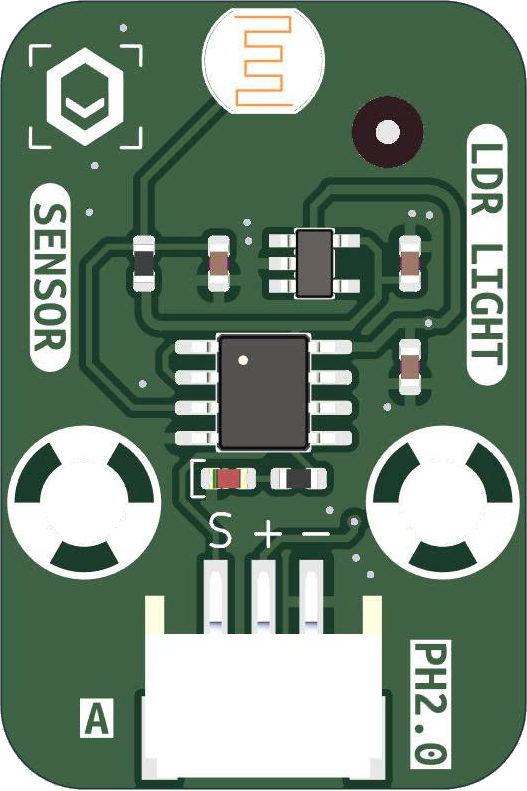
 Design with mkes0002_ldr_module in Cirkit Designer
Design with mkes0002_ldr_module in Cirkit DesignerIntroduction
The MKES0002 LDR module, manufactured by MKEVN, is a light-dependent resistor (LDR) sensor module designed to detect ambient light levels. It outputs an analog signal that varies proportionally with the intensity of light falling on the sensor. This module is ideal for applications such as automatic lighting control, light-sensitive alarms, and general-purpose light sensing in electronic projects.
Common applications include:
- Automatic street lighting systems
- Light-sensitive alarms
- Brightness adjustment in displays
- DIY electronics and Arduino-based projects
Explore Projects Built with mkes0002_ldr_module
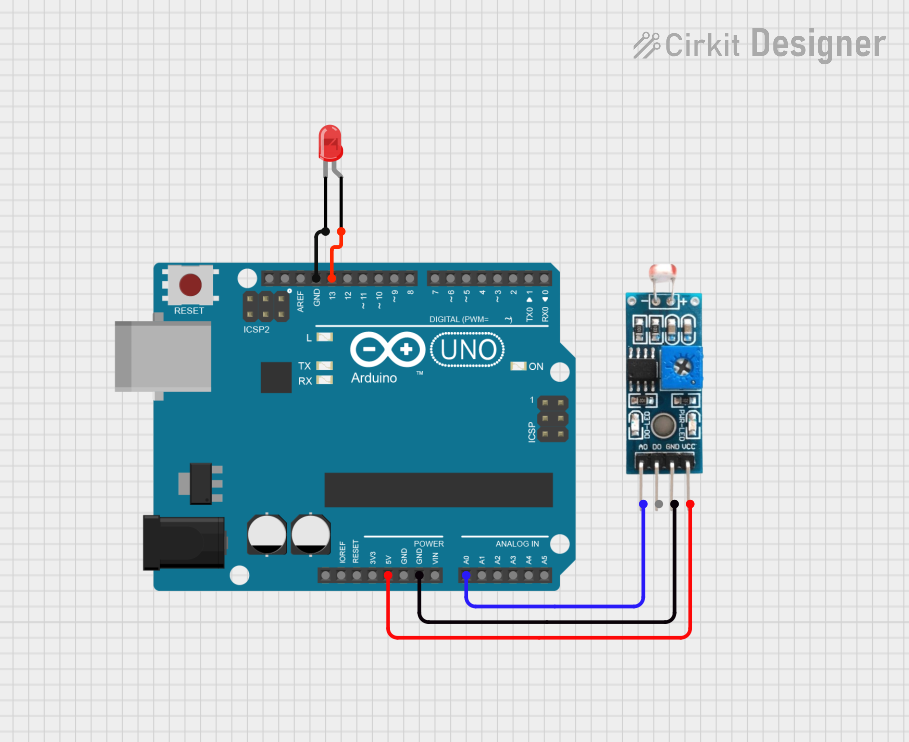
 Open Project in Cirkit Designer
Open Project in Cirkit Designer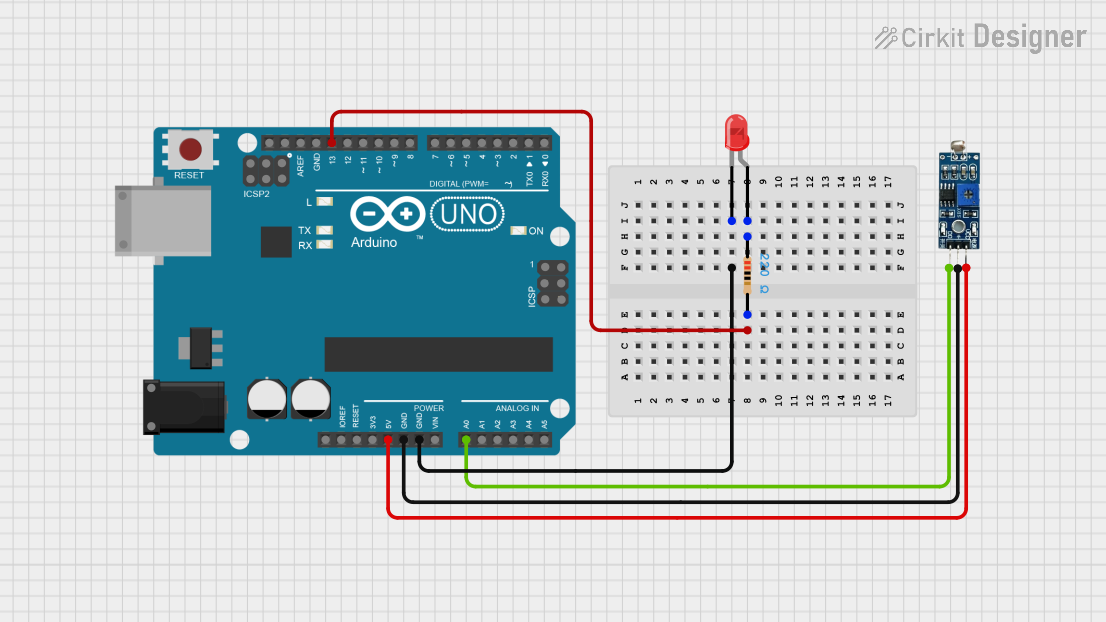
 Open Project in Cirkit Designer
Open Project in Cirkit Designer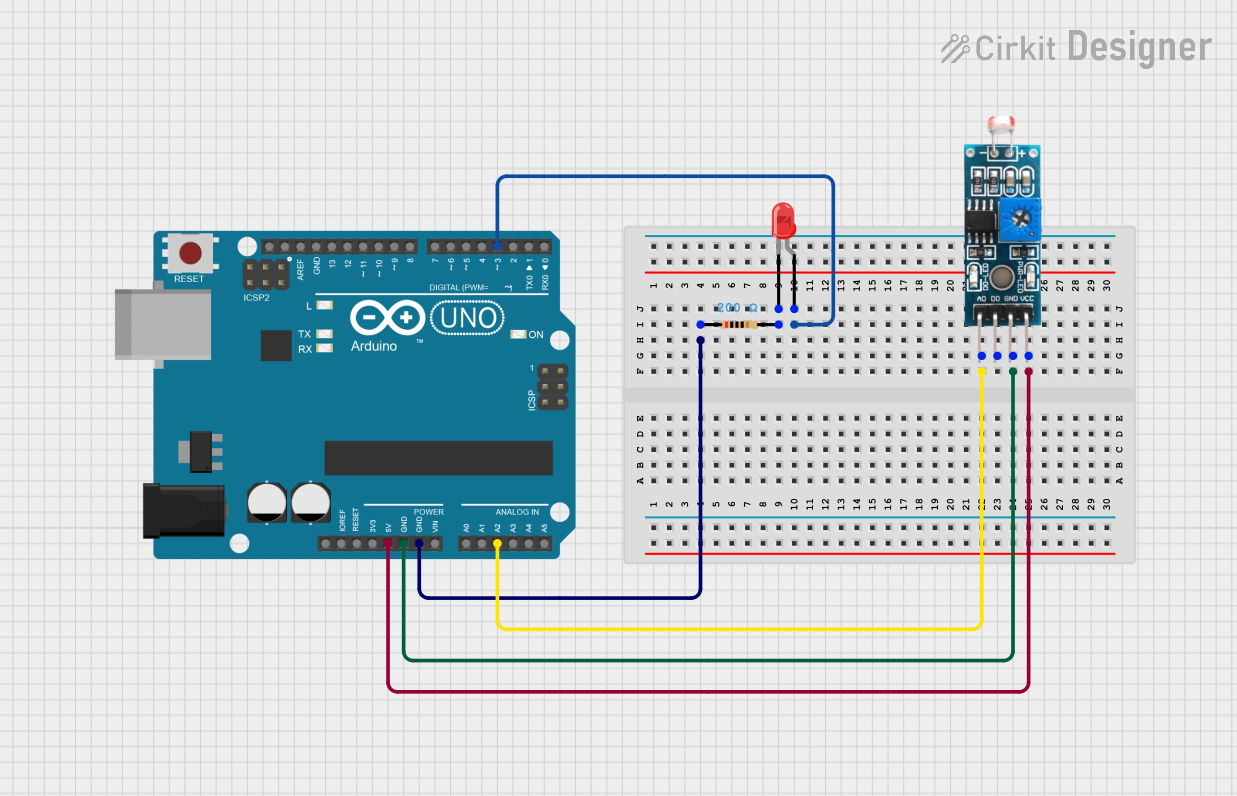
 Open Project in Cirkit Designer
Open Project in Cirkit Designer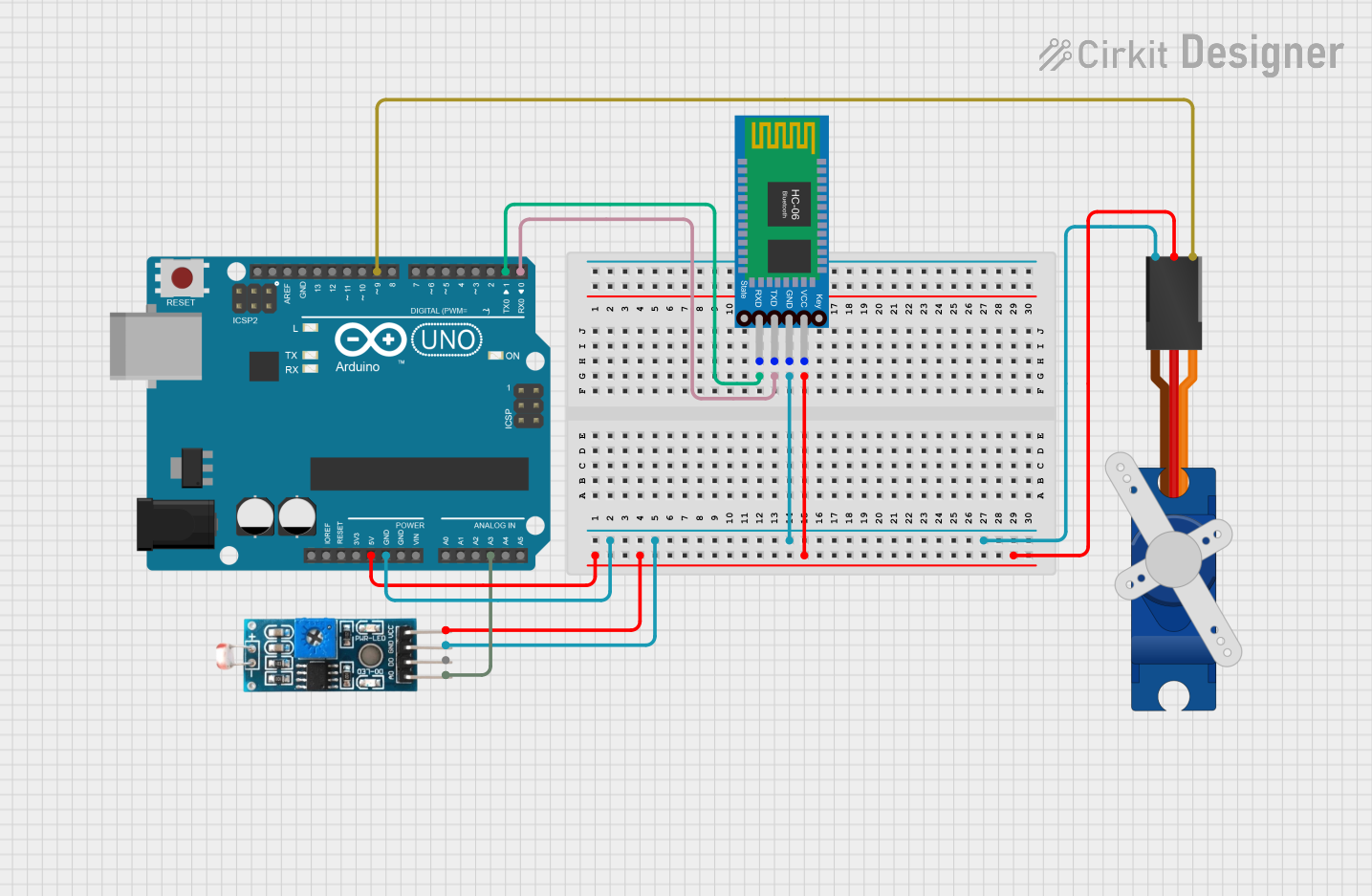
 Open Project in Cirkit Designer
Open Project in Cirkit DesignerExplore Projects Built with mkes0002_ldr_module

 Open Project in Cirkit Designer
Open Project in Cirkit Designer
 Open Project in Cirkit Designer
Open Project in Cirkit Designer
 Open Project in Cirkit Designer
Open Project in Cirkit Designer
 Open Project in Cirkit Designer
Open Project in Cirkit DesignerTechnical Specifications
The MKES0002 LDR module is designed for ease of use and integration into various circuits. Below are its key technical details:
Key Specifications
| Parameter | Value |
|---|---|
| Manufacturer | MKEVN |
| Part ID | MKES0002 |
| Operating Voltage | 3.3V - 5V |
| Output Type | Analog |
| Light Sensitivity Range | 10 lux to 10,000 lux |
| Dimensions | 30mm x 15mm x 10mm |
| Operating Temperature | -20°C to 70°C |
Pin Configuration
The MKES0002 LDR module has a simple 3-pin interface for easy connection to microcontrollers and other circuits. The pin configuration is as follows:
| Pin Number | Pin Name | Description |
|---|---|---|
| 1 | VCC | Power supply input (3.3V to 5V) |
| 2 | GND | Ground connection |
| 3 | OUT | Analog output signal proportional to light level |
Usage Instructions
The MKES0002 LDR module is straightforward to use in a circuit. Follow the steps below to integrate it into your project:
Connecting the Module
- Power Supply: Connect the
VCCpin to a 3.3V or 5V power source and theGNDpin to the ground of your circuit. - Output Signal: Connect the
OUTpin to an analog input pin of your microcontroller or to an analog-to-digital converter (ADC) if required.
Example Circuit with Arduino UNO
Below is an example of how to connect the MKES0002 LDR module to an Arduino UNO:
- Connections:
VCC→ 5V on ArduinoGND→ GND on ArduinoOUT→ A0 (Analog Pin 0) on Arduino
Sample Arduino Code
The following Arduino code reads the analog signal from the MKES0002 LDR module and prints the light intensity value to the Serial Monitor:
// Define the analog pin connected to the LDR module
const int ldrPin = A0;
void setup() {
// Initialize the Serial Monitor for debugging
Serial.begin(9600);
}
void loop() {
// Read the analog value from the LDR module
int lightLevel = analogRead(ldrPin);
// Convert the analog value to a voltage (assuming 5V reference)
float voltage = lightLevel * (5.0 / 1023.0);
// Print the light level and voltage to the Serial Monitor
Serial.print("Light Level (Raw): ");
Serial.print(lightLevel);
Serial.print(" | Voltage: ");
Serial.print(voltage);
Serial.println(" V");
// Add a short delay for readability
delay(500);
}
Important Considerations
- Power Supply: Ensure the module is powered within its operating voltage range (3.3V to 5V). Exceeding this range may damage the module.
- Analog Signal: The
OUTpin provides an analog signal that varies with light intensity. Use an ADC or an analog input pin to read this signal. - Placement: Place the module in an area where it can accurately sense ambient light without obstructions.
Troubleshooting and FAQs
Common Issues and Solutions
No Output Signal:
- Cause: Incorrect wiring or insufficient power supply.
- Solution: Double-check the connections and ensure the module is powered with 3.3V to 5V.
Inconsistent Readings:
- Cause: Electrical noise or unstable power supply.
- Solution: Use decoupling capacitors (e.g., 0.1µF) near the power pins to stabilize the supply voltage.
Low Sensitivity:
- Cause: The module is placed in a poorly lit or obstructed area.
- Solution: Ensure the module is exposed to the light source without obstructions.
Output Signal Stuck at Maximum or Minimum:
- Cause: The light intensity is outside the module's sensitivity range.
- Solution: Verify that the light levels are within the module's specified range (10 lux to 10,000 lux).
FAQs
Q1: Can the MKES0002 LDR module be used outdoors?
A1: Yes, but it should be protected from moisture and extreme environmental conditions. Use an enclosure if necessary.
Q2: How do I increase the sensitivity of the module?
A2: The sensitivity is determined by the LDR and the circuit design. You can adjust the sensitivity by using an external resistor in a voltage divider configuration with the LDR.
Q3: Can I use this module with a 3.3V microcontroller?
A3: Yes, the module operates within a voltage range of 3.3V to 5V, making it compatible with 3.3V microcontrollers like the ESP32.
Q4: What is the maximum distance between the module and the microcontroller?
A4: The distance depends on the quality of the wiring and the environment. For analog signals, keep the distance as short as possible to avoid signal degradation.
By following this documentation, you can effectively integrate the MKES0002 LDR module into your projects and troubleshoot any issues that arise.